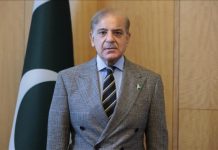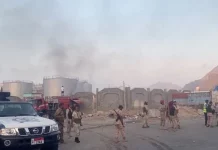Foreign Desk Report
Naypyidaw: A plan is under way for Min Aung Hlaing, head of Myanmar’s military and leader of last year’s coup, to build the biggest sculpture of a sitting Buddha in the world – part of his attempt to forge a legacy as a protector of Buddhism.
But, in the last year, soldiers directly under his command have killed nearly 1,500 people in a crackdown on the military’s opponents that violates Buddhism’s first and most important principle: to abstain from killing.
”Their Buddhism is a fake show, they don’t deserve to be called Buddhists. We don’t kill other people. What they are doing right now is all opposite of Buddhism,” said Agga Wantha, a 30-year-old monk from Mandalay who has been leading protests against the coup. “They are just saying that they are Buddhist but they are doing this just to get a hold of the country.” Min Aung Hlaing has turned to methods used in the past to try and claim some kind of legitimacy in this 90-percent Buddhist country that has been under military control for most of the past 60 years.
That has meant alliances with high-profile monks and regular reminders of the high-ranking officers’ devotion to the Buddha, despite a continuing campaign of violence.
In late October, the military initiated a scorched-earth campaign in Thantlang, in northwestern Chin State, destroying hundreds of buildings and forcing thousands to flee their homes.
Days later, Min Aung Hlaing visited several monasteries in Mandalay, Myanmar’s second-biggest city, making obeisance and giving alms. Among the monks he met was Bhamo Sayadaw, chairperson of the State Sangha Maha Nayaka Committee, a government-appointed body of high-level monks that oversees Buddhism and the clergy in Myanmar.
Military leadership visits to high-profile monks are published almost daily in the state-run media as part of the public relations effort. A report from the United States Institute of Peace last month showed that public displays of military support for Buddhism increased almost four-fold after the coup.
“The army has been very clever about using religion as their selling point. If you’re a monk in the society you have the absolute respect of the population. This is why the military wants to use them because it is a very effective tool for them to manipulate society,” said Sai Thet Naing Oo, Myanmar country representative at the Pyidaungsu Institute for Peace and Dialogue, which works to bring together different political voices in Myanmar.
“So even though there are many other things he could be doing, Min Aung Hlaing always takes time to visit the popular monks.”
‘Almost everybody hates them’
The military has faced considerable opposition since it deposed civilian leader Aung San Suu Kyi and her party, the National League for Democracy (NLD), in a coup it claimed was necessary because of fraud in the November 2020 elections.
A strong resistance movement emerged almost immediately, with demonstrations and a mass movement of civil disobedience leading to the development of a decentralised network of armed groups, known as the People’s Defence Force (PDF), that is now in regular conflict with military troops across the country.
The international community has also condemned the regime with the United States and the European Union imposing sanctions against several military leaders and military-owned businesses. At the United Nations, the country continues to be represented by the ambassador appointed by the NLD government.
With overwhelming resistance at home and a lack of support internationally, the military is desperate for any support it can get, according to Richard Horsey, Myanmar adviser at the International Crisis Group.
In early September, military authorities announced that they had released Ashin Wirathu, a monk known for his Buddhist nationalist views, especially his bigoted stance against Muslims.




